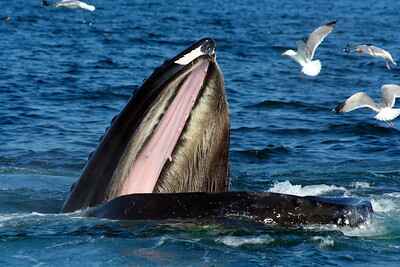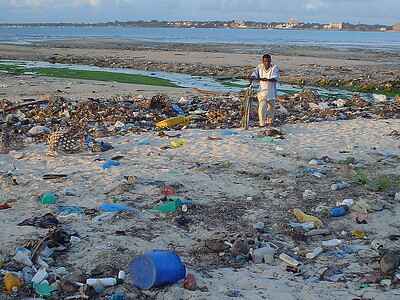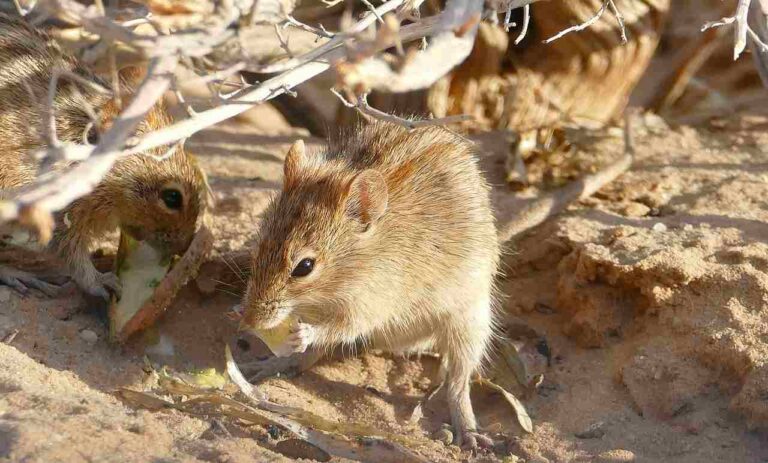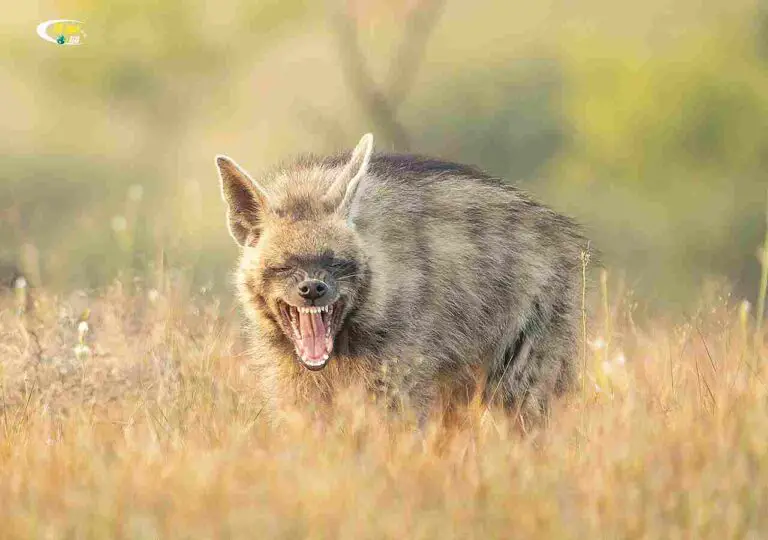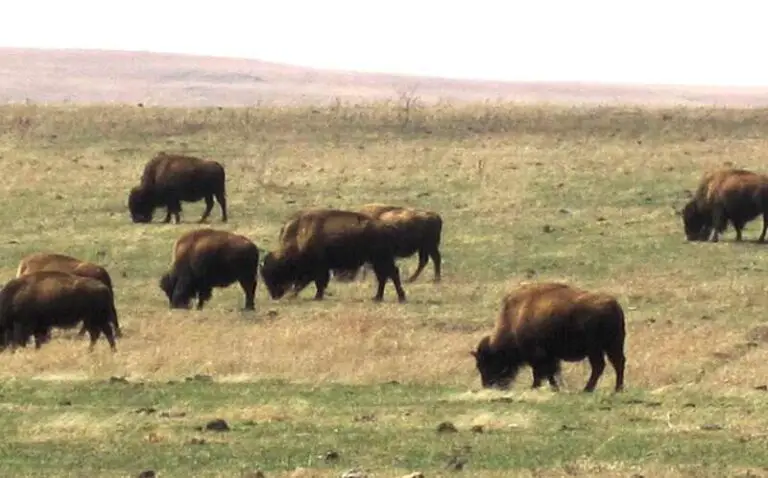5 Marine Biome Animals and their Characteristics Explained
Marine biome animals are; fish like shark; fissipeds like sea otter and polar bear; cetaceans like dolphin, porpoise and whale; sirenians like manatee; and pinnipeds like walrus and sea lion.
This article discusses marine biome animals and their characteristics, as follows;
1). Fish (as one of the Marine Biome Animals)
Fish represents arguably the most dominant, common and populous group of marine animals.
Marine fish can be described as cold-blooded, oviparous, vertebrate animals [8], with high level of adaptation to the aquatic ecosystem. They differ from freshwater fish by their tolerance of saline water.
Some adaptive features of fish in the ocean include dorsal vision, branchial (gill-dependent) respiration, streamlined body, and fins for navigation.
The species richness and biodiversity of fish in the marine biome are generally high. As a result, major differences in behavior, size, and other physiological attributes can be observed among the fish species in the ocean.
Marine fish have economic importance as a food source, and may also have ornamental value in artificial ponds and aquariums.
One of the most popular marine fish is salmon; which occurs as a native specie in the North Pacific and North Atlantic saltwater basins [7]. Salmon is commercially important as a sea food product, and its consumption has been associated with health benefits like blood pressure optimization, detoxification and reduction of inflammation [4].
Examples of marine fish are; clownfish, mackerel, carp, tuna, sardine, angelfish, damselfish, spadefish, and damselfish.
Because of their large population, dominant presence and biodiversity, fish are major contributors to the process of biomass and energy transfer which occurs in marine food chains, food webs and energy pyramids.
2). Fissipeds
Fissipeds represent a large group of diverse; carnivorous mammals that share a a physiological characteristic whereby their toes are separated completely to the base [5].
The term 'fissiped' comes from Latin words fissus and pedis; which mean split and foot respectively. Split toes is an adaptive feature of these carnivores, for locomotion and hunting purposes, depending on the nature of habitat in which they occur.
Examples of fissipeds include solely-terrestrial mammals like cats, badgers, racoons and black bears.
In a marine ecosystem, the two main fissiped animals are sea otters and polar bears.
Fissipeds are different from other marine mammals by their split-foot physiology, as well as by the relative ease with which they navigate both marine and terrestrial terrains.
In marine food chains, fissipeds usually occupy prominent positions as consumers, with polar bears often acting as apex (tertiary or quaternary) predators. The relationship of these organisms with marine ecosystems is mainly dietary, as they do not live in water.

3). Cetaceans (as one of the Marine Biome Animals)
In marine biology, cetaceans are a group of mammals of the order Cetacea; which have evolved to inhabit aquatic biomes while retaining some basic mammalian characteristics, like lung respiration and viviparous reproduction.
Marine animals that make up the cetaceans in this ecosystem are dolphins, porpoises, and various kinds of whales like blue whale, orca and sperm whale.
Types of cetaceans in marine ecosystems are; toothed and baleen cetaceans, of the suborders odontocetes and mysticetes respectively [2]. They are differentiated by their physiological adaptations for feeding; where toothed cetaceans have teeth for capturing and crushing prey, while baleen cetaceans use a filter-feeding organ called the baleen.
The physiological and behavioral characteristics of cetaceans are distinct from those of other marine mammal groups like the pinnipeds and sirenians [9], which are both discussed in subsequent sections of this article.

4). Sirenians
Sirenians are a group of predominantly herbivorous and large, slow, aquatic organisms that can be found in freshwater and shallow marine zones [6].
They are called sirenians because they are of the biological Order Sirenia; which is named after the Greek mythologic term Siren, that refers to mermaid-like creatures. The term is used because of the physiological characteristics of these mammals that include forelimbs that have been modified into flippers for aquatic locomotion.
There are four Sirenia families including Trichechidae, and Dugongidae, which differ slightly in their features [3].
The largest sirenian known is the Steller's sea cow; a now extinct marine mammal that grew to weights of 10 tonnes and body-lengths of 30 feet.
Examples of marine sirenians are dugong and manatee. They usually play the role of primary consumer, by grazing on seaweed, although they do not frequently fall prey to larger consumers due to geographic-range differences.
5). Pinnipeds (as one of the Marine Biome Animals)
The group of marine carnivores called pinnipeds are saltwater mammals of the taxonomic Suborder Pinnipedia; which is named from the Latin word 'Pinna' to mean 'fin-footed' [1].
Unique characteristics of pinnipeds include four modified flipper-limbs, stream-lined body, sensory whiskers, external ears, and large eyes.
Although their physiological adaptations are mostly suited to aquatic navigation, pinnipeds are slightly similar to fissipeds like polar bears in their ability (and tendency) to spend extended periods of time on land.
Sea lion is a classic example of pinnipeds, alongside seals and walruses. While these organisms are generally carnivorous, they often fall prey to larger and/or less-vulnerable carnivores like the polar bear and whale.
The marine habitat of pinnipeds sometimes shares close boundaries with polar-terrestrial habitats like tundras.

Conclusion
Marine biome animals are;
1. Fish
2. Fissipeds
3. Cetaceans
4. Sirenians
5. Pinnipeds
References
1). Biolsi, K. L. (2017). "Pinniped Life History. In: Vonk, J., Shackelford, T. (eds) Encyclopedia of Animal Cognition and Behavior." Springer, Cham. Available at: https://doi.org/10.1007/978-3-319-47829-6_942-1. (Accessed 15 April 2023).
2). Fordyce, R. E. (1980). "Whale evolution and Oligocene southern ocean environments." Palaeogeography, Palaeoclimatology, Palaeoecology Volume 31, 1980, Pages 319-336. Available at: https://doi.org/10.1016/0031-0182(80)90024-3. (Accessed 15 April 2023).
3). Frankini, E. L.; John, J.; Habib, N.; Granatosky, M. C. (2021). "Sirenia Locomotion." Encyclopedia of Animal Cognition and Behavior (pp.1-5). Available at: https://doi.org/10.1007/978-3-319-47829-6_1335-1. (Accessed 15 April 2023).
4). Grieger, J. A.; Miller, M. D.; Cobiac, L. (2014). "Investigation of the effects of a high fish diet on inflammatory cytokines, blood pressure, and lipids in healthy older Australians." Food Nutr Res. 2014 Jan 15;58. Available at: https://doi.org/10.3402/fnr.v58.20369. (Accessed 15 April 2023).
5). Holekamp, K. E.; Sawdy, M. A. (2019). "The evolution of matrilineal social systems in fissiped carnivores." Philos Trans R Soc Lond B Biol Sci. 2019 Sep 2;374(1780):20180065. Available at: https://doi.org/10.1098/rstb.2018.0065. (Accessed 15 April 2023).
6). Klappenbach, L. (2019). "Sirenians: Gentle Seagrass Grazers." Available at: https://www.thoughtco.com/sirenians-profile-129902. (Accessed 15 April 2023).
7). McKinnell, S.; Thomson, A. J.; Black, E. A.; Wing, B. L.; Motter, C.; Koerner, J. F.; Helle, J. H. (2008). "Atlantic salmon in the North Pacific." Aquaculture Research 28(2):145 - 157. Available at: https://doi.org/10.1046/j.1365-2109.1997.t01-1-00841.x. (Accessed 15 April 2023).
8). Porcu, C.; Lai, E.; Bellodi, A.; Carbonara, P.; Cau, A.; Mulas, A.; Pascale, N.; Porceddu, R.; Follesa, M. C. (2022). "Investigating the Ovarian Microstructure in the Genera Helicolenus and Scorpaena (Teleostei, Sub-Order Scorpaenoidei) with Implications for Ovarian Dynamics and Spawning." Animals (Basel). 2022 May 30;12(11):1412. Available at: https://doi.org/10.3390/ani12111412. (Accessed 15 April 2023).
9). Thewissen, J.G.M., Cooper, L.N., George, J. C.; Bajpai, S. (2009). "From Land to Water: the Origin of Whales, Dolphins, and Porpoises." Evo Edu Outreach 2, 272–288 (2009). Available at: https://doi.org/10.1007/s12052-009-0135-2. (Accessed 15 April 2023).
